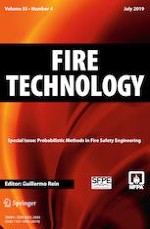21-06-2018
The Need for Hierarchies of Acceptance Criteria for Probabilistic Risk Assessments in Fire Engineering
Published in: Fire Technology | Issue 4/2019
Log inActivate our intelligent search to find suitable subject content or patents.
Select sections of text to find matching patents with Artificial Intelligence. powered by
Select sections of text to find additional relevant content using AI-assisted search. powered by
